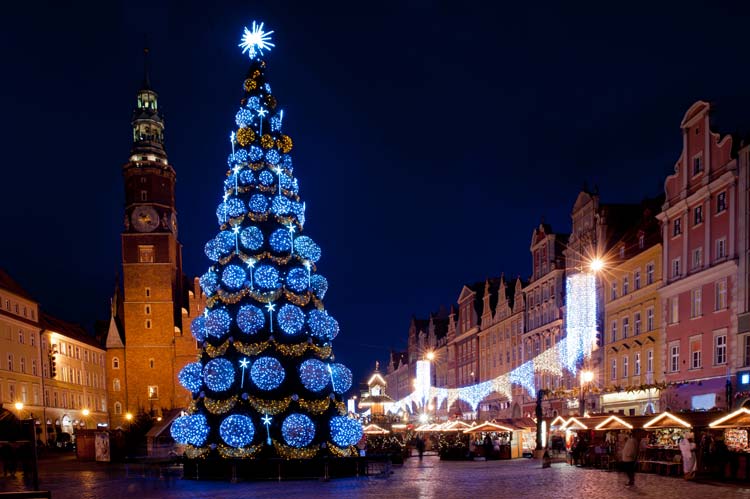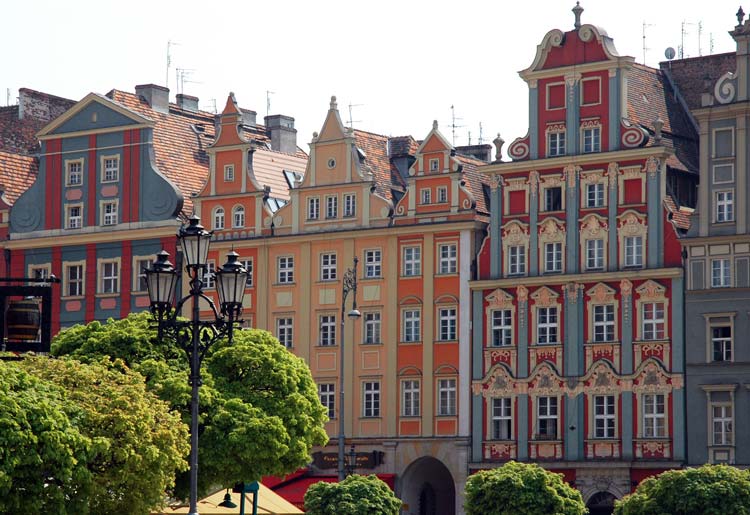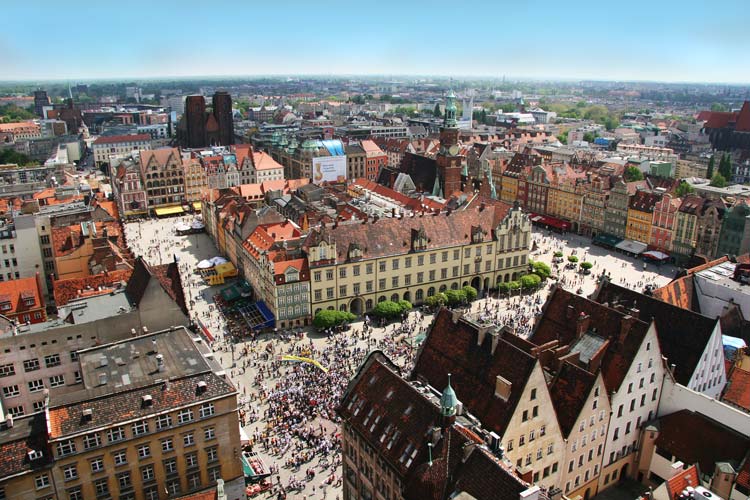Are you wondering where to go during your next trip to Europe? Next, to its most famous cities, such as London, Paris or Barcelona, there are some that few have heard of. One of them is Wroclaw. It’s not a metropolis, but neither a small town, so it’s large enough to be diverse and eventful, but not to be overwhelming. With its handsome churches, marvelous cathedrals, lovely fountains and tenement houses, Wroclaw is incredibly beautiful. It’s also worth-visiting – and here’s why exactly:
-
Table of Contents
The architecture in Wroclaw is stunning
Lots of architectonic styles meet in Wroclaw, from richly decorated Baroque to classy Renaissance. Wroclaw’s long and turbulent history adds to the diversity of architecture. Throughout centuries, the city was influenced (and ruled) by various kingdoms and countries, including Silesia, Bohemia, Hungary, Austria, Prussia, Germany and, eventually, Poland. The Gothic Town Hall is dating back to 13th century, the Royal Palace built in 18th century during the Austrian rule, the Cathedral of St. John the Baptist consecrated in 1272, but rebuilt and expanded in following centuries, just to name a few. Wroclaw’s central point, the Market Square, from the very first sight charms visitors with gorgeous, colorful buildings. Cathedral Island, the oldest part of the city, is full of historic churches connected by cobblestoned streets and lit with old-style oil lamps. The entire city center is a playground for architecture-lovers. Wherever you wander, wherever you look, you may find some interesting gems.
-
Nice places to hang around and stroll about
Wroclaw has numerous bewitching streets, squares, and parks, where you can only walk about and soak up the atmosphere. The Market Square is a lovely place and even if you don’t walk much, but just sit down on a random bench, you’ll have a lot to observe: people passing by, street musicians, windowsills decorated with flowers. When the weather is nice, Słodowa Island attracts many strollers, readers, and picnic-enthusiasts. It’s a favorite park located north of the Old Town. If you want to have a coffee or do some shopping, you can head to Więzienna Street. Even though więzienna translates to prison (Wroclaw has lots of streets with creepy names), don’t get discouraged by its name – it’s a lovely pedestrian street full of bars, cafés, and boutiques. You should also see the impressing Wroclaw Fountain. From April to October, the fountain creates light, music and water shows that attract thousands of viewers.

-
It’s affordable
Comparing to western European countries, Poland is affordable and so is Wroclaw. As for accommodation, there’s a broad range of options. Fancy hotels cost from about 60€ a night (Poland has its currency called Złoty, but to make it more understandable, we’ll use Euro to speak about the prices), mid-range hotels and guest-houses usually charge from about 40€, a bed in a hostel dormitory might cost 8-10€ and in a private room 10-15€. You can get a hearty lunch for 5€ and a beer in a pub for 1,5€.
-
Wroclaw has over a hundred bridges
The number isn’t precise, because, as it turns out, the definition of a bridge is quite controversial, especially in Polish which has different names for bridges depending on their location, stability, and size. Anyway, there’s about one hundred of them Wroclaw, some small and straightforward, others impressive and decorative. Most importantly, they’re not only an odd curiosity but also an important part of what makes Wroclaw so bewitching. When you go out in the evening and have a stroll around the Old Town, you’ll see the bridges beautifully lit and lights reflected in the waters of the Oder River (what a lucky river, wearing so many jewels and adornments!).

-
…And a community of about 300 hundreds gnomes
One more Wroclaw’s unique characteristic is the presence of gnomes. They first came to the city during the communism. When anti-socialists graffiti was removed from the walls, activists would paint the gnomes in their place as a symbol of disagreement. After the communism was over, the gnomes were forgotten, but they returned to Wroclaw several years ago when the city finally remembered them. Since 2005, new gnomes started appearing on the streets and squares, in the corners, parks, and gardens of Wroclaw. Looking for them is quite a favorite urban game. The gnomes have their website with a map for the searchers.
-
It’s less crowded than Poland’s most known cities
When traveling to Poland, most people only go to Cracow and Warsaw. Both of these towns are fascinating indeed, but they can also get very crowded. Wroclaw, despite being awe-inspiring, isn’t equally touristy. Although it might not be exactly beneficial to the city’s economy, it is to the visitors: it’s not as full of tourists as the towns mentioned above. It doesn’t mean it’s empty, Wroclaw is still quite an attractive destination, and its locals themselves make a large group, but it’s not as crowded as some other Polish and European cities. You should consider it when planning your trip. Cracow and Warsaw are captivating too, but if you have more time, don’t limit yourself to visiting only those two because they happen to be the most famous. Spare at least two or three days for Wroclaw; you won’t regret it.
-
Lively atmosphere
There’s something very unique to Wroclaw’s atmosphere. It’s a student town, which gives it youthful and vibrant energy, but, unlike small towns with large universities, Wroclaw is not only a student city, it’s much more than that. Its locals are diverse and so are their tastes, styles, and passions. You can feel it while you walk around or go out in the evening. Wroclaw has a broad range of bars and pubs, restaurants and stores, movies, theatres and other cultural institutions. It can appeal to different sorts of people, representing a variety of cultures, ages, and interests. The night-life is wealthy and diverse. There are lots of events being held all the time, like the famous New Horizons Film Festival, Festival of Polish Contemporary Music, Brave Festival– Against Cultural Exile or Dialog-Wrocław International Theatre Festival. It’s modern and relaxed, but at the same time incredibly romantic. Besides, it feels cozy – because of all the lovely houses, or warm cafés, or little narrow streets, or welcoming locals, or all of it together.
Are you convinced to visit Wroclaw? Let us know and share this article with your friends to spread the message about this magical town!




